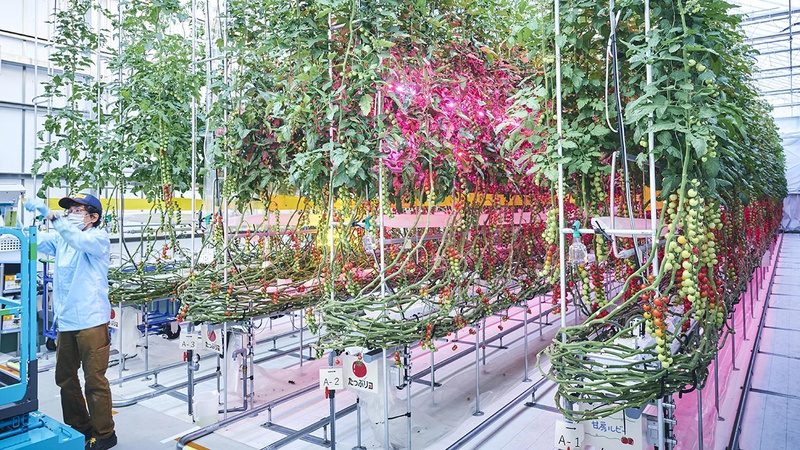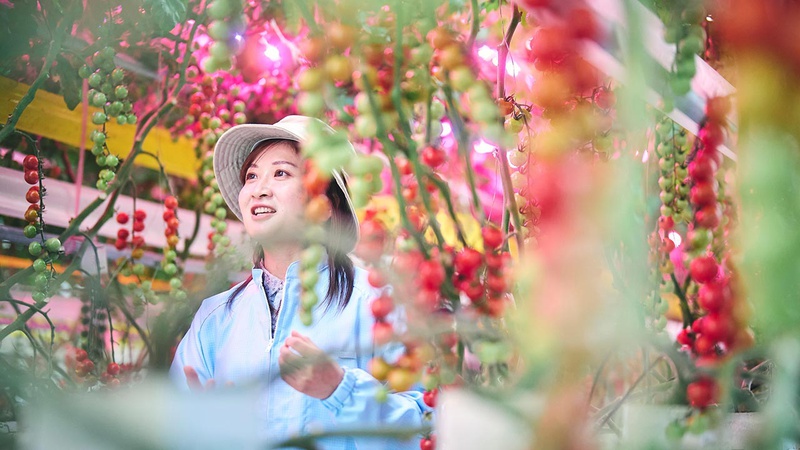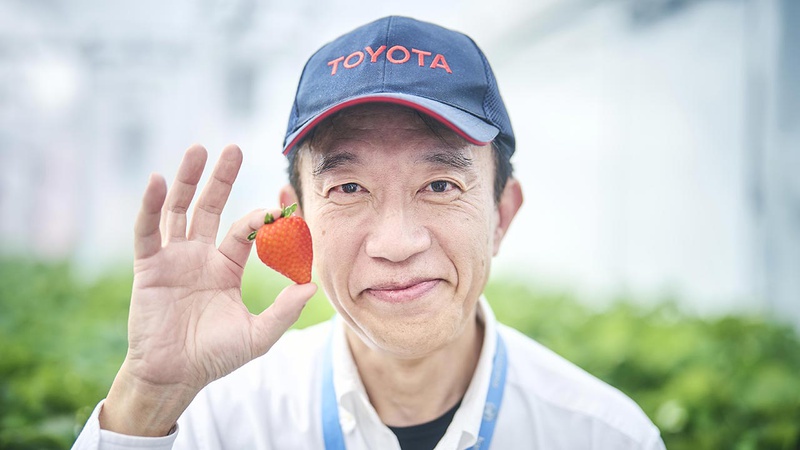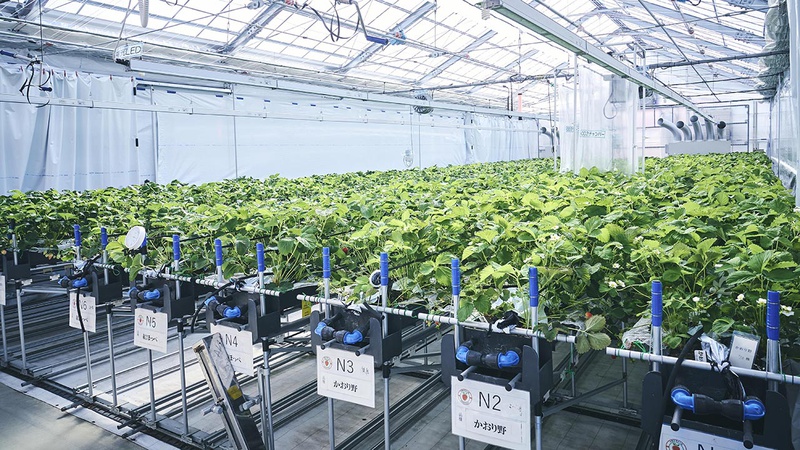Toyota is well aware of the negative environmental impact of excess heat and CO2. In April 2022, farmers helped the automaker set up an experimental greenhouse to grow strawberries at its Kamigo Plant, where it builds engines for the Toyota Crown and other Lexus models. It grows tomatoes at its Myochi plant.
By building the planters on sliders, Toyota's growing efforts can produce 1.5 times the yield of a similarly sized field. The design reduces wasted space for unused rows between planters. The system allows growers to create aisles when and where needed, maximizing available space.




Farmers shouldn't worry that Toyota is meddling in their business. The strawberries and cherry tomatoes grown in its factories are served for free in its cafeterias. Instead, it wants to use its expertise to see how it can help them build "efficient agricultural systems," says Hiroshi Okajima, Toyota Project General Manager, R&D and Engineering Management Division.
Toyota grows its fruit with pink LEDs. The company removed the green tint to give the lights their unique color. The green hues aren't necessary for photosynthesis.
Automakers could explore additional agricultural initiatives while seeking novel methods to repurpose waste. Such endeavors align with their shift towards eco-friendly practices, which encompasses integrating more recycled materials into newly-manufactured vehicles, such as fishing nets and various types of plastics.
Source: Toyota Times

